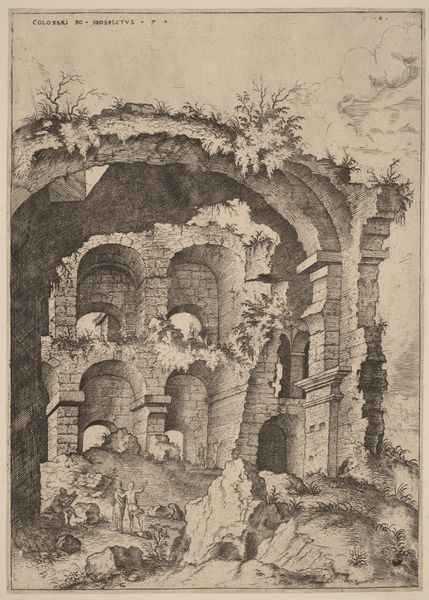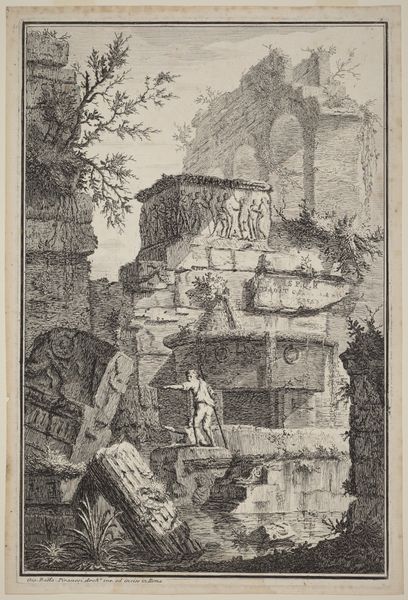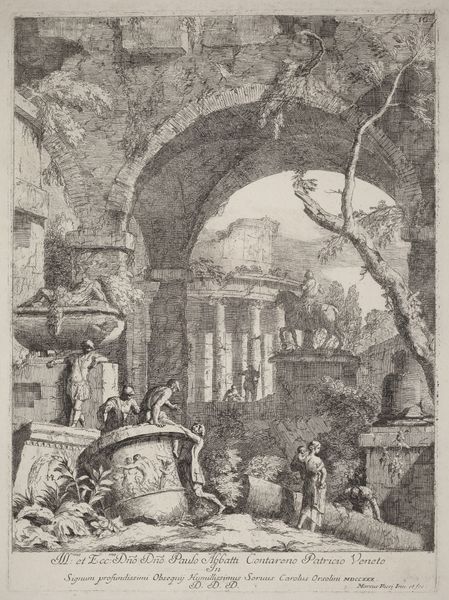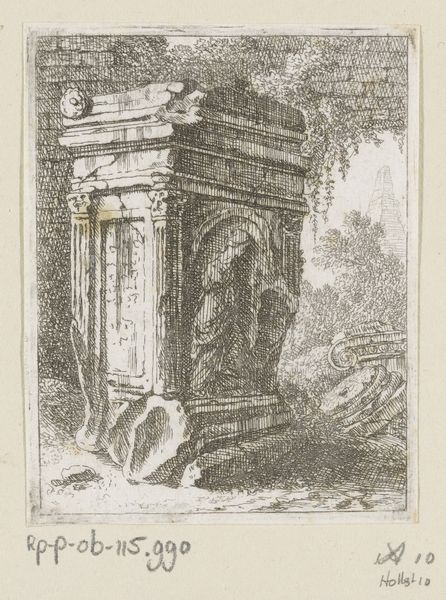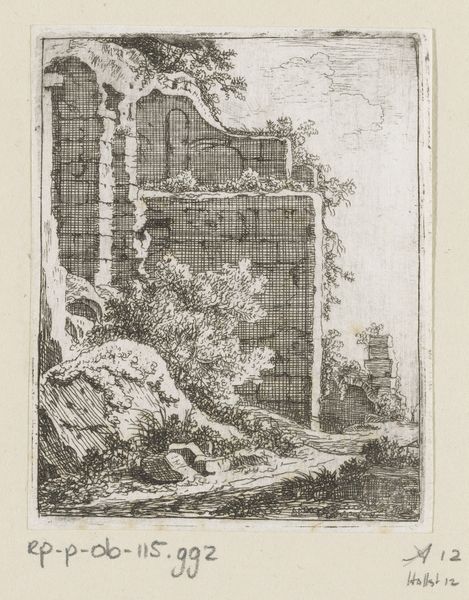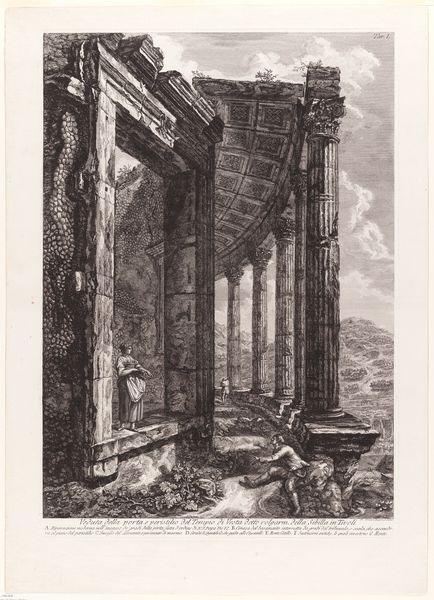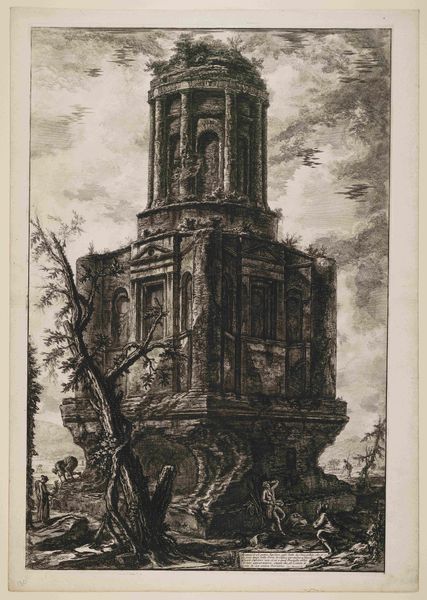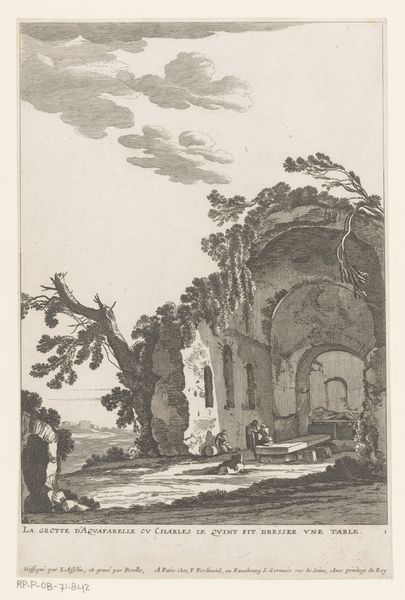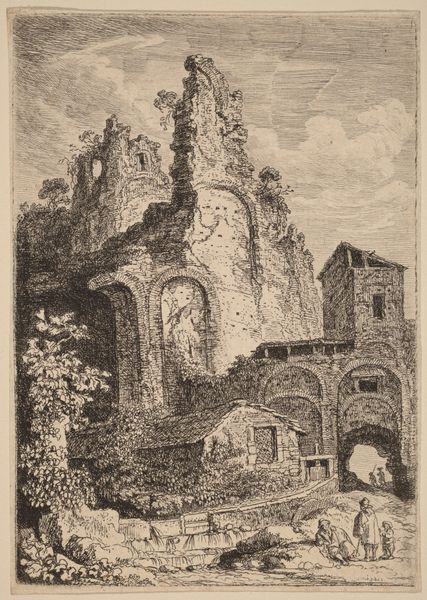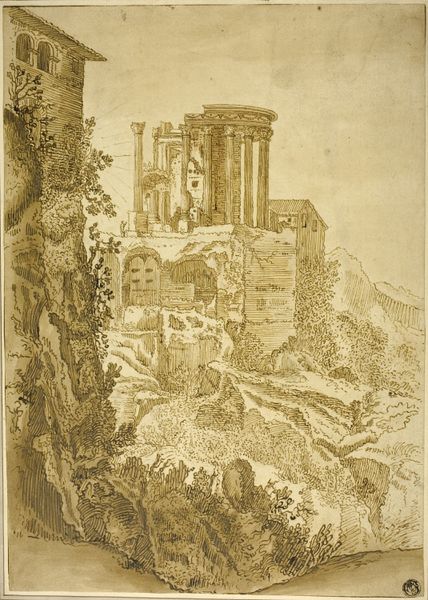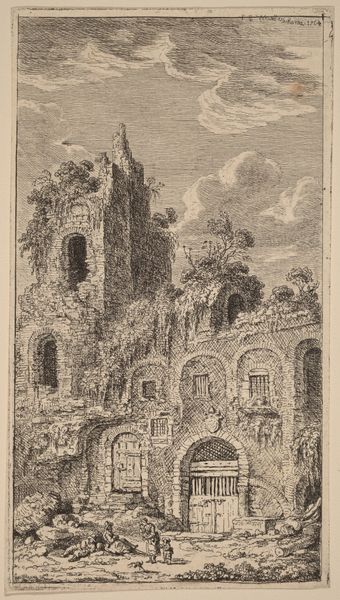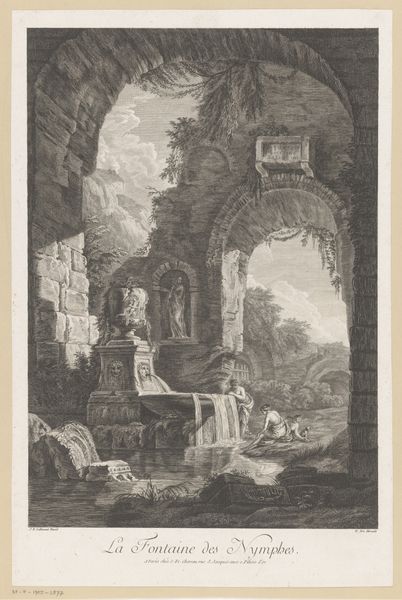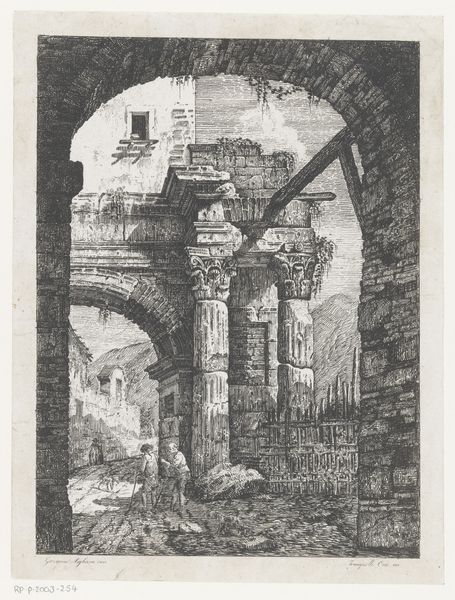
Altra V. del Tempio della Sibilla in Tivoli (Another view of the Temple of the Sibyl in Tivoli) 1735 - 1778
0:00
0:00
drawing, print, etching
#
drawing
#
neoclassicism
# print
#
etching
#
landscape
Copyright: Public Domain
Curator: This is Giovanni Battista Piranesi’s, "Altra V. del Tempio della Sibilla in Tivoli (Another view of the Temple of the Sibyl in Tivoli)." The etching dates to between 1735 and 1778, and the work can be found here at the Met. Editor: What strikes me immediately is the layering. The careful detail etched to portray the effects of decay—it speaks to a visual language rooted in time and process. The print work allows a widespread appreciation. Curator: Absolutely, notice the composition. Piranesi structures the piece so that the eye is drawn upward, following the architectural ascent. This isn't merely a depiction of ruins; it's a carefully constructed narrative. Consider how the light catches the entablature and the remaining columns. He is working within neoclassical ideals. Editor: Indeed, but beyond the compositional arrangement, I find myself considering the physical effort behind the printmaking. Each line represents time, the wearing of the plates. I can’t help but wonder about Piranesi's intention here. He clearly valued mass production—the idea that anyone can simply obtain and consume this aesthetic. Curator: Interesting point. And it pushes me to think about semiotics within the work itself. These ruins don't just represent a bygone era but become symbols for a type of melancholy. Look at how the human figures interact with the landscape; they’re dwarfed, emphasizing the power of antiquity, and also speaking to ideas of the sublime. Editor: Agreed, the small human presence underscores our relationship with architecture and landscape. But this etching method speaks directly to consumption. How easily art becomes decor, traded amongst the elite, while labor itself is lost in shadow, hidden by the final aesthetic product. Curator: Yes, the beauty may belie other material processes—a necessary tension to address in full. This work then poses the question, what do these ruins truly represent to us now? Editor: Perhaps the more poignant question becomes: who has access to the ruin, its memory, and what labor made it accessible at all?
Comments
No comments
Be the first to comment and join the conversation on the ultimate creative platform.
